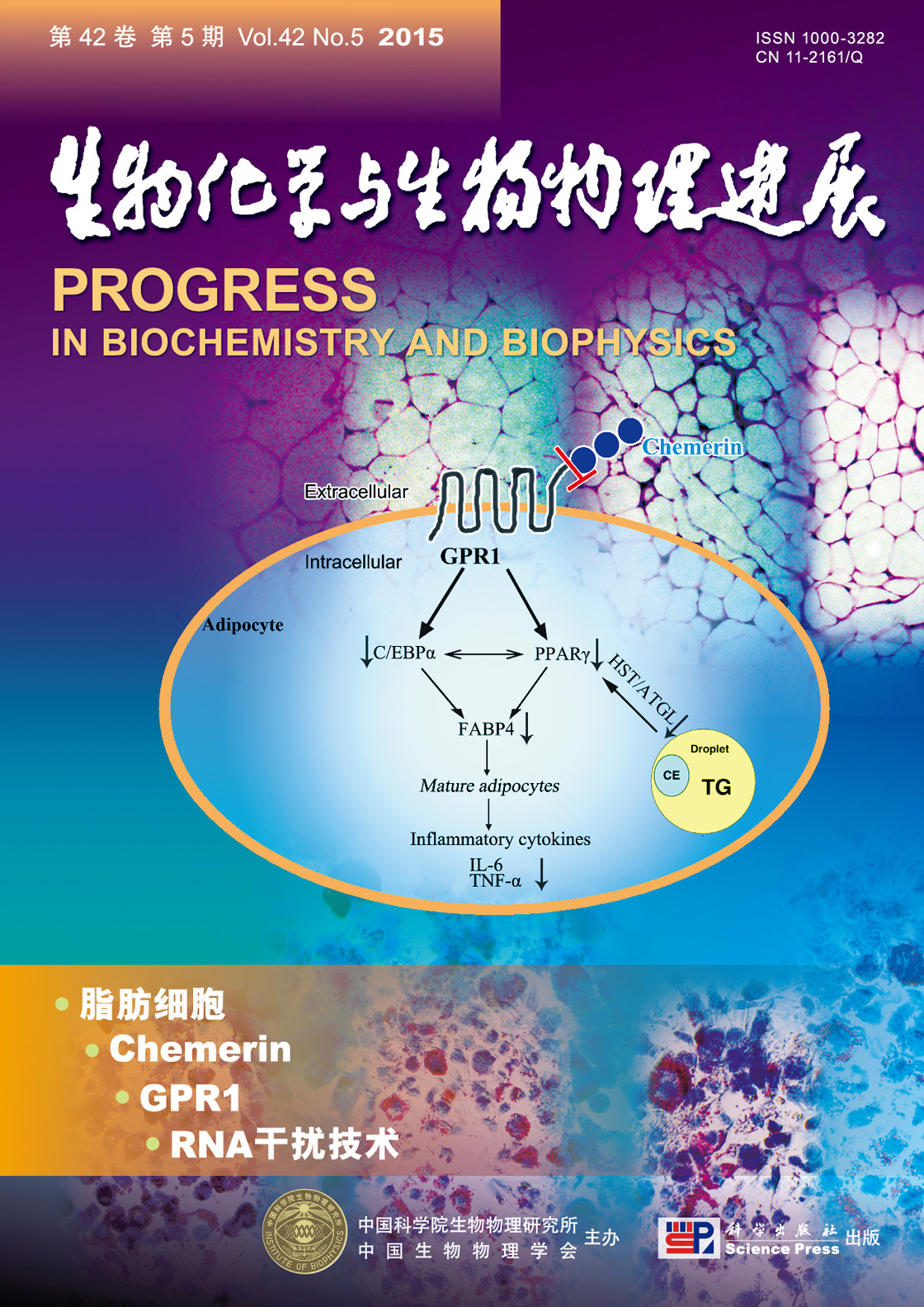Vol.42,No.5,2015
| |

|
Cover Story:Obesity is considered to be a trouble and risk factor to interfere health and it's a potential risk for type Ⅱ diabetes, cardiovascular diseases, and hypertension.Although the pathologic mechanisms of those diseases related to obesity are resulted from multifactor, increasing evidence demonstrated that altered adipokines (adiponectin, leptin, TNF-α) secreted by adipose tissue, and local inflammatory responses play important role in pathogenesis of the disease. The Chemerin (RARRES2 or TIG2), an adipokine has been discovered recently, serves as a ligand for the G protein-coupled receptor1 (GPR1) and has a significant role in metabolism and innate immunity. To investigate the effect of Chemerin and its receptor GPR1 in lipid accumulation of mice, we established obesity mice model successfully by given high-fat diet. Knockdown of Chemerin or GPR1 expression in C57BL/6 mice and pre-differentiation 3T3-L1 cells by siRNA interfering technology,we discovered that Chemerin and its receptor GPR1 were expressed in inguinal fat tissue and subscapular fat tissue. Meanwhile, the lipid accumulation in liver and inguinal fat tissue was inhibited by knockdown of Chemerin or GPR1 expression in C57BL/6 mice. Cultured 3T3-L1 adipocytes secrete Chemerin, which recruits GPR1 signaling in adipocytes and stimulates chemotaxis of GPR1-expressing cells. Small interfering RNA(siRNA) targeted knockdown of Chemerin or GPR1 expression in 3T3-L1 cells impaired differentiation of 3T3-L1 cells into adipocytes, reduced the lipid accumulation in adipocytes and the expression of adipocyte genes and altered metabolic functions in mature adipocytes. So, Chemerin and its receptor may play an important role in regulating lipid accumulation. In summary, Chemerin/GPR1 may be a potential signal pathway that regulates lipid accumulation in adipocytes, and provides a potential therapeutic target for metabolism disorder disease linking obesity.
|
Reviews and Monographs
Research Papers
|
|
